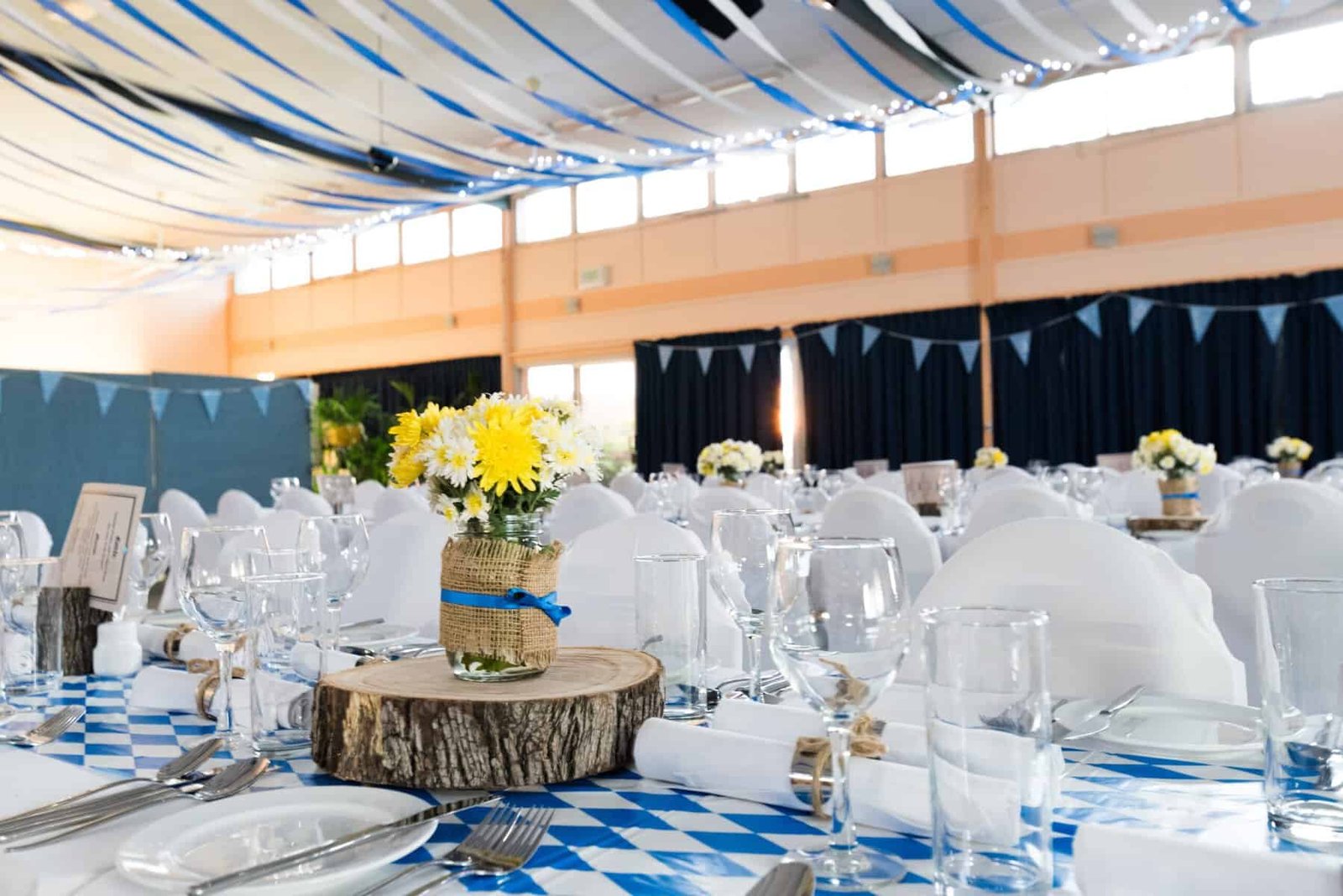Are you eager to perfect your skateboarding skills and take your performance to the next level at competitions and events? Look no further! This article will provide you with valuable insights and tips on how to effectively train for skateboarding competitions and events. Whether you are a seasoned competitor or a novice looking to make your mark, we’ve got you covered. Discover the best training techniques, exercises, and strategies that will help you achieve your goals and dominate the skate park like never before. Get ready to elevate your game and amaze audiences with your incredible skills!

Physical Conditioning
Skateboarding is a physically demanding sport that requires a combination of strength, endurance, flexibility, range of motion, balance, and stability. To excel in skateboarding competitions and events, it is essential to prioritize your physical conditioning.
Strength Training
Strength training is an essential aspect of skateboarding training. It helps you to develop the power and control necessary for various tricks and maneuvers. Incorporating exercises such as squats, lunges, deadlifts, and push-ups into your training routine can effectively improve your overall body strength. Additionally, focusing on exercises that target the specific muscles used in skateboarding, such as the legs, core, and upper body, can significantly enhance your performance.
Endurance Training
Endurance training is vital for skateboarding competitions and events as it allows you to maintain optimal performance for extended periods. Engaging in cardiovascular activities like running, cycling, or swimming helps to strengthen your heart and lungs, enhancing your endurance on the skateboard. Additionally, incorporating interval training, such as high-intensity interval training (HIIT), can simulate the bursts of energy and recovery needed during a skateboarding routine.
Flexibility and Range of Motion
Flexibility and range of motion are crucial aspects of skateboarding, enabling you to execute tricks and maneuvers with ease and reducing the risk of injuries. Incorporating stretching exercises into your training routine can improve your flexibility and range of motion. Focus on stretches that target the major muscle groups used in skateboarding, including the hips, hamstrings, quadriceps, and shoulders. Regular stretching sessions before and after training can enhance your performance and prevent muscle imbalances.
Balance and Stability
Balance and stability play a vital role in skateboarding. Developing a strong sense of balance and stability will not only help you land tricks but also improve your overall control on the board. Incorporating exercises like single-leg squats, standing on a balance board or stability ball, and practicing tricks on a balance beam can significantly enhance your balance and stability. Additionally, incorporating core exercises, such as planks and Russian twists, can further strengthen your stability and control on the skateboard.
Technical Skills
Mastering the technical skills of skateboarding is essential to stand out in competitions and events. Whether you are a beginner or an experienced skateboarder, continually improving your technical skills should be a priority.
Mastering Basic Techniques
Mastering the basic skateboarding techniques is the foundation for advancing your skills. Start by practicing fundamental tricks like ollies, kickflips, and manuals. Focus on perfecting your form and execution, paying attention to body positioning, weight distribution, and timing. Repetition and consistent practice of these basic techniques will enhance your muscle memory and overall skill level.
Learning Advanced Tricks
As you become more confident in your basic techniques, you can progress to learning more advanced tricks. This includes tricks like 360 flips, heelflips, and board slides. It is important to break down these complex tricks into smaller components and practice each component individually. Slowly piece them together until you can perform the trick smoothly. Seeking guidance from experienced skateboarders or coaches can provide valuable tips and techniques to help you master these advanced tricks effectively.
Perfecting Tricks on Different Surfaces
Skateboarding competitions and events often take place on various surfaces, including skateparks, streets, and ramps. To excel in these different settings, it is essential to practice and perfect your tricks on various surfaces. This will help you adapt to different textures, angles, and obstacles. Dedicate specific training sessions to practicing tricks on different surfaces and incorporate them into your regular training routine.
Practicing Transitions and Obstacles
Skateboarding competitions often involve performing tricks on ramps, quarterpipes, and other obstacles. Learning to navigate transitions smoothly and incorporating obstacles into your routines can significantly enhance your performance. Practice riding transitions and launching off ramps, focusing on maintaining control and fluidity. Additionally, incorporate obstacle-specific training into your routine, such as grinding rails or sliding down handrails. This will build your confidence and expand your trick repertoire.
Combining Tricks in Sequences
To truly impress judges and spectators in skateboarding competitions, it is essential to master the art of combining tricks in sequences. This allows you to showcase your creativity, style, and technical ability. Begin by selecting a few tricks you feel confident in and experiment with different combinations. Focus on fluid transitions and incorporating your personal flair. Practice these sequences repeatedly until they become second nature. Remember, the key to creating impressive sequences is to find a balance between difficulty and consistency.
Mental Preparation
Skateboarding competitions and events can be mentally challenging, requiring focus, confidence, and resilience to perform at your best. Incorporating mental preparation techniques into your training routine can significantly impact your performance.
Setting Clear Goals
Setting clear and specific goals is crucial in maintaining focus and motivation throughout your skateboarding training. Determine what you want to achieve in competitions or events and establish short-term and long-term goals. By breaking down your goals into smaller milestones, you can track your progress and celebrate achievements along the way. Clear goals provide a sense of direction and purpose, keeping you motivated throughout your training journey.
Visualizing Success
Visualization is a powerful mental tool for athletes, including skateboarders. Spend time visualizing yourself performing flawlessly in competitions and events. Imagine the tricks you want to execute, the reactions from the audience, and the satisfaction of achieving your goals. Visualization helps to enhance mental focus, confidence, and muscle memory. Practice this technique regularly to develop a positive mindset and increase your chances of success.
Developing Mental Toughness
Skateboarding can be physically and mentally demanding, requiring perseverance in the face of challenges and setbacks. Developing mental toughness is essential to overcome hurdles during competitions and events. Engage in mental resilience exercises like meditation, deep breathing, and positive self-talk. These techniques can help you stay calm under pressure, regain focus after a fall, and bounce back from mistakes. Building mental toughness will ultimately enhance your overall performance and enjoyment of skateboarding.
Managing Performance Anxiety
It is common to feel nervous or anxious before competitions and events. Learning effective strategies to manage performance anxiety can help you channel that nervous energy in a positive way. Techniques such as controlled breathing exercises, progressive muscle relaxation, and positive affirmations can significantly reduce anxiety levels. Additionally, establishing pre-competition routines that include warm-up exercises, visualization, and listening to motivating music can help ease nerves and improve your overall mindset.
Competition Strategies
To succeed in skateboarding competitions, it is essential to develop effective strategies tailored to the specific event and competition format. Here are some strategies to consider:
Analyzing the Competition
Before participating in any skateboarding competition, take the time to analyze other skateboarders’ strengths and weaknesses. Observe their technique, style, and trick selection. Analyzing the competition allows you to identify potential areas where you can differentiate yourself and set your performance apart. It also helps you understand the judging criteria and preferences, enabling you to tailor your routine accordingly.
Creating a Competition Routine
Developing a well-structured competition routine is essential to maximize your performance and showcase your skills effectively. Design a routine that includes a combination of your strongest tricks, impressive sequences, and crowd-pleasing maneuvers. Consider the time limit and available obstacles to create a routine that flows seamlessly from one trick to another. Practice your routine consistently to build confidence and ensure smooth execution during the actual competition.
Adapting to Different Skatepark Layouts
Skateboarding competitions often take place on different skatepark layouts, each with its unique obstacles and features. Familiarize yourself with various skatepark layouts and practice on similar setups to the competition venue. This will help you adapt quickly to different environments and ensure you are comfortable with the specific park’s transitions, ramps, and rails. Understanding the layout in advance will give you a competitive edge and allow you to plan your tricks and sequences accordingly.
Taking Advantage of Scoring Systems
Understanding the scoring system used in skateboarding competitions is crucial for maximizing your points. Different competitions may emphasize different aspects, such as difficulty, style, consistency, or innovation. Take the time to study the scoring system beforehand and tailor your routine to highlight those aspects. This might involve incorporating highly technical tricks, adding stylish flourishes to your maneuvers, or focusing on consistency and precision. By aligning your performance with the scoring criteria, you can enhance your chances of achieving a high score from the judges.

Physical Warm-up
Properly warming up your body before skateboarding competitions and events is essential to prevent injuries and optimize your performance. A thorough warm-up routine should include various exercises and stretches to prepare your body for the demands of skateboarding.
Dynamic Stretches
Dynamic stretches involve moving your muscles and joints through a full range of motion. These stretches are beneficial for increasing blood flow, warming up the muscles, and improving flexibility. Incorporate exercises such as leg swings, arm circles, hip rotations, and trunk twists into your warm-up routine. Perform each movement smoothly and progressively, gradually increasing the intensity.
Cardiovascular Exercises
Engaging in a brief cardiovascular exercise, such as jogging or jumping jacks, can raise your heart rate and warm up your cardiovascular system. This helps increase blood flow to the muscles, delivering oxygen and nutrients necessary for optimal performance. Aim for 5-10 minutes of moderate-intensity cardiovascular exercise before skateboarding.
Joint Mobility Exercises
Maintaining joint mobility is vital for smooth and fluid movements on the skateboard. Include exercises that target joint mobility in your warm-up routine, such as ankle circles, wrist rotations, and shoulder rolls. These exercises help to lubricate the joints, improve range of motion, and reduce the risk of injuries.
Balance and Coordination Drills
Incorporating balance and coordination drills into your warm-up routine can enhance your stability and control on the skateboard. Exercises such as single-leg balances, heel-to-toe walks, and dribbling a soccer ball can improve proprioception and neuromuscular control. These drills help activate the muscles responsible for balance and prepare them for the demands of skateboarding.
Training Schedule
Having a well-structured training schedule is essential in preparing for skateboarding competitions and events. It ensures that you allocate sufficient time for skill-specific training, cross-training, rest, and recovery.
Establishing Regular Training Sessions
Consistency is key when it comes to skateboarding training. Establishing regular training sessions helps maintain momentum, progress, and skill development. Aim for at least 3-5 training sessions per week, with each session lasting a minimum of 1-2 hours. By committing to a regular schedule, you can gradually increase the intensity and volume of your training, enabling you to reach peak performance.
Balancing Skill-specific and Cross-training Activities
While skill-specific training is necessary for improving your skateboarding techniques, incorporating cross-training activities can enhance your overall athleticism and reduce the risk of overuse injuries. Balance your training by incorporating activities such as strength training, cardiovascular exercises, and flexibility training. Engaging in different exercises and movements outside of skateboarding can improve your strength, endurance, and mobility, ultimately enhancing your skateboarding performance.
Periodization for Peak Performance
Periodization refers to the systematic planning of training phases to optimize performance during peak periods. Divide your training into specific phases, including a preparatory phase, a competition phase, and a recovery phase. During the preparatory phase, focus on building strength, enhancing skills, and improving techniques. Gradually transition to the competition phase, where you refine specific routines and tricks. Finally, during the recovery phase, allow your body to rest and recover before the next competition or event.

Equipping Yourself
Choosing the right skateboard setup and wearing appropriate protective gear are vital to ensure both safety and optimal performance in skateboarding competitions and events. Here are some factors to consider in equipping yourself.
Choosing the Right Skateboard Setup
Choosing the right skateboard setup is crucial for a comfortable and responsive ride. Consider factors such as deck size, truck width, wheel hardness, and concave shape. Experiment with different setups until you find one that suits your riding style and preferences. Consult with experienced skateboarders or visit a reputable skate shop for guidance in selecting the appropriate setup that matches your skating needs.
Wearing Protective Gear
Skateboarding can be physically demanding and involves inherent risks. It is essential to wear protective gear to minimize the risk of injury. Always wear a helmet to protect your head from potential impacts. Additionally, knee pads, elbow pads, and wrist guards can prevent injuries to these vulnerable areas. Invest in high-quality protective gear that fits properly and provides adequate protection. Your safety should always be a priority when participating in skateboarding competitions and events.
Selecting Proper Footwear
Choosing the right footwear is essential in skateboarding. Look for skate-specific shoes that provide excellent grip, durability, and ankle support. These shoes are designed to withstand the rigors of skateboarding and offer optimal foot stability. When selecting footwear, ensure a comfortable fit that allows for proper contact with the board and prevents foot fatigue during extended periods of skateboarding.
Becoming a skilled skateboarder and excelling in competitions and events requires more than just technical training. It is equally important to have a strong support system that can guide, motivate, and inspire you throughout your skateboarding journey.
Finding a Coach or Mentor
Having a coach or mentor can provide invaluable guidance and support throughout your skateboarding training. A coach can help you develop a personalized training plan, offer expert advice, and identify areas for improvement. A mentor, whether an experienced skateboarder or a supportive friend, can provide motivation, share experiences, and accompany you in your skateboarding endeavors. Their expertise and perspective can accelerate your progress and enhance your overall performance.
Joining Skateboarding Training Programs
Joining skateboarding training programs or camps can provide structure, resources, and a supportive community. These programs offer specialized training sessions led by experienced coaches and provide opportunities to connect with other skateboarders who share the same passion. Training programs can offer valuable feedback, access to specialized equipment, and an environment that fosters growth and camaraderie. Consider researching and enrolling in reputable skateboarding training programs to take your skills to the next level.
Building a Supportive Skateboarding Community
Building a supportive skateboarding community can contribute significantly to your progress and enjoyment of the sport. Connect with other skateboarders through skateboarding clubs, online forums, and local skate parks. Share experiences, seek advice, and collaborate with fellow skateboarders to enhance your skills and widen your network. Engaging with a supportive community can provide motivation during challenging times, inspire creativity, and offer a sense of belonging within the skateboarding culture.
Recovery and Injury Prevention
Recovery and injury prevention should be an integral part of your skateboarding training regimen. Prioritizing proper recovery techniques and injury prevention strategies can help you maintain longevity in the sport and enhance your overall performance.
Post-Session Recovery Routine
After each skateboarding session, it is crucial to prioritize post-session recovery. Perform light stretching exercises to alleviate muscle soreness and aid in muscle recovery. Applying ice or using cold therapy methods, such as ice baths or ice packs, can reduce inflammation and promote faster recovery. Additionally, incorporating self-massage techniques, such as foam rolling, can help release tension and improve muscle flexibility. Allow yourself adequate rest and recovery time between training sessions to allow your body to repair and recharge.
Incorporating Rest Days
Rest days are essential in preventing overuse injuries and mental burnout. Schedule regular rest days in your training schedule to allow your body to recover and adapt. Rest days help your muscles repair and rebuild, reducing the risk of overtraining and chronic fatigue. Use these days to focus on active recovery activities such as gentle stretching, low-intensity activities like walking, or engaging in other hobbies. By incorporating rest days, you ensure sustainable progress and maintain optimal performance.
Recognizing and Addressing Common Injuries
Skateboarding, like any sport, carries the risk of injuries. Common skateboarding injuries include sprained ankles, wrist fractures, and knee injuries. It is crucial to recognize these injuries promptly and seek appropriate medical attention. Ignoring injuries or pushing through pain can lead to long-term damage or hinder your progress. Follow proper injury management protocols, including rest, ice, compression, and elevation (RICE), and consult with a healthcare professional for an accurate diagnosis and treatment plan.
Creating an Injury Prevention Plan
Preventing injuries should be a top priority in your skateboarding training. Incorporate injury prevention exercises and activities into your routine to strengthen weak areas and improve overall stability. Include exercises that strengthen your core, lower body, and upper body, as these areas are commonly involved in skateboarding movements. Additionally, focus on proper stretching and warm-up routines before each session to prepare your muscles and joints for the demands of skateboarding. Proper technique and body mechanics also play a significant role in injury prevention, so pay attention to your form and seek guidance if needed.
Nutrition and Hydration
Optimal nutrition and hydration are essential for supporting your body’s performance and recovery during skateboarding competitions and events. Properly fueling your body will enhance your energy levels, endurance, and overall skateboarding performance.
Fueling Your Body for Optimal Performance
Skateboarding requires a combination of strength, power, and endurance. To fuel your body for optimal performance, focus on a well-balanced diet that includes a variety of whole foods. Aim to include lean proteins, complex carbohydrates, and healthy fats in each meal. Proteins, such as lean meats, fish, tofu, and legumes, aid in muscle repair and growth. Complex carbohydrates, such as whole grains, fruits, and vegetables, provide sustained energy. Healthy fats, found in nuts, avocados, and olive oil, support brain function and hormone production. Optimizing your nutrition will provide the necessary energy for demanding skateboarding sessions.
Hydrating Properly
Proper hydration is vital for maintaining performance and preventing dehydration during skateboarding. Drink water regularly throughout the day, especially before, during, and after training sessions or competitions. Ensure your urine is clear or pale yellow, an indication of adequate hydration. During longer sessions or competitions, consider incorporating sports drinks or electrolyte-rich beverages to replenish fluids and electrolytes lost through sweat. Hydrating properly will help maintain cognitive function, prevent muscle cramps, and support overall physical performance.
Pre-Competition and Post-Competition Nutrition
Your pre-competition and post-competition nutrition can significantly impact your performance and recovery. Before a competition or event, consume a meal that focuses on easily digestible carbohydrates, such as whole grain toast, fruits, or a smoothie. These carbohydrates provide readily available energy and help prevent fatigue during your performance. After a competition or event, prioritize replenishing your body with a balanced meal that includes protein, carbohydrates, and healthy fats. This will support muscle repair, glycogen replenishment, and overall recovery.
In conclusion, training for skateboarding competitions and events involves a comprehensive approach that encompasses physical conditioning, technical skills, mental preparation, competition strategies, physical warm-up, training schedules, equipment selection, support systems, recovery and injury prevention, and proper nutrition and hydration. By following these guidelines and continually pushing your limits, you can enhance your skateboarding abilities, stand out in competitions, and achieve your goals in the sport. Remember to have fun, stay dedicated, and embrace the journey of becoming a skilled skateboarder.

